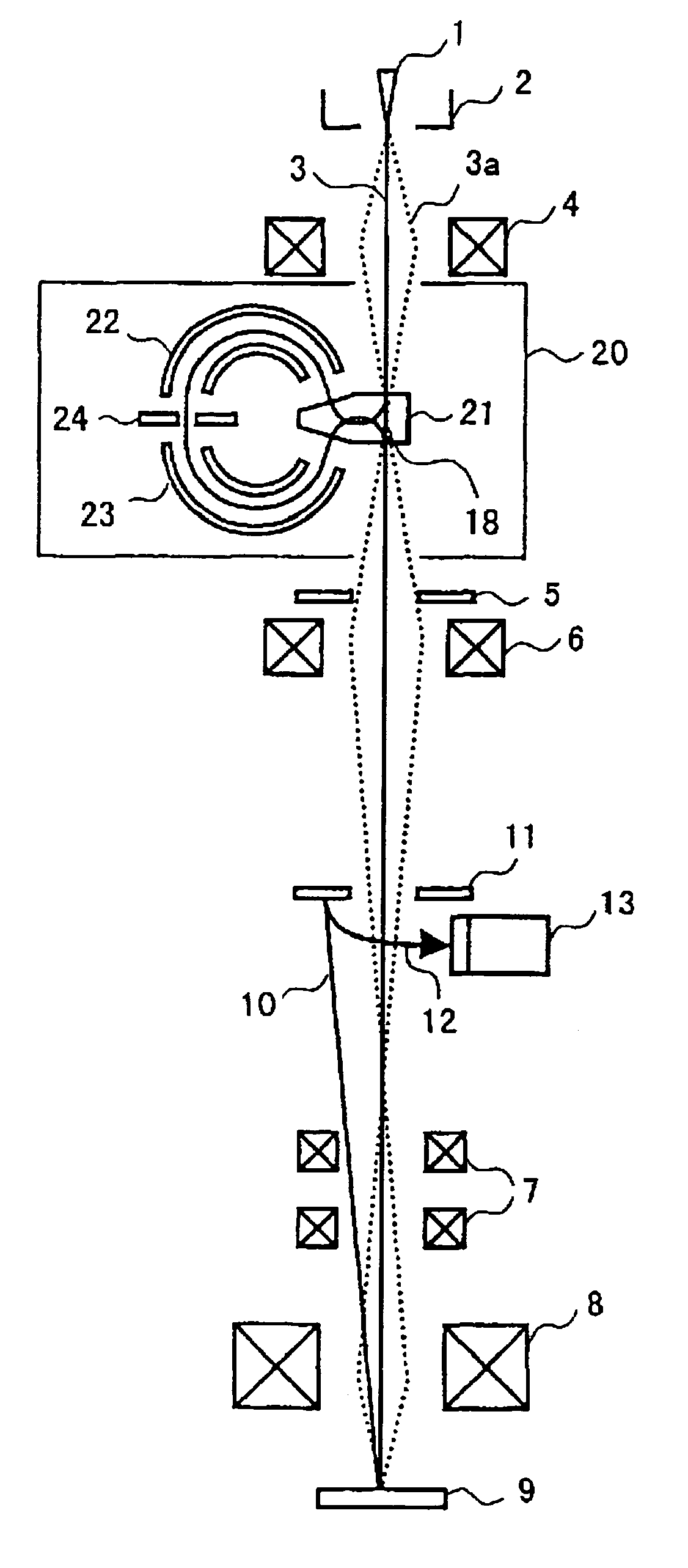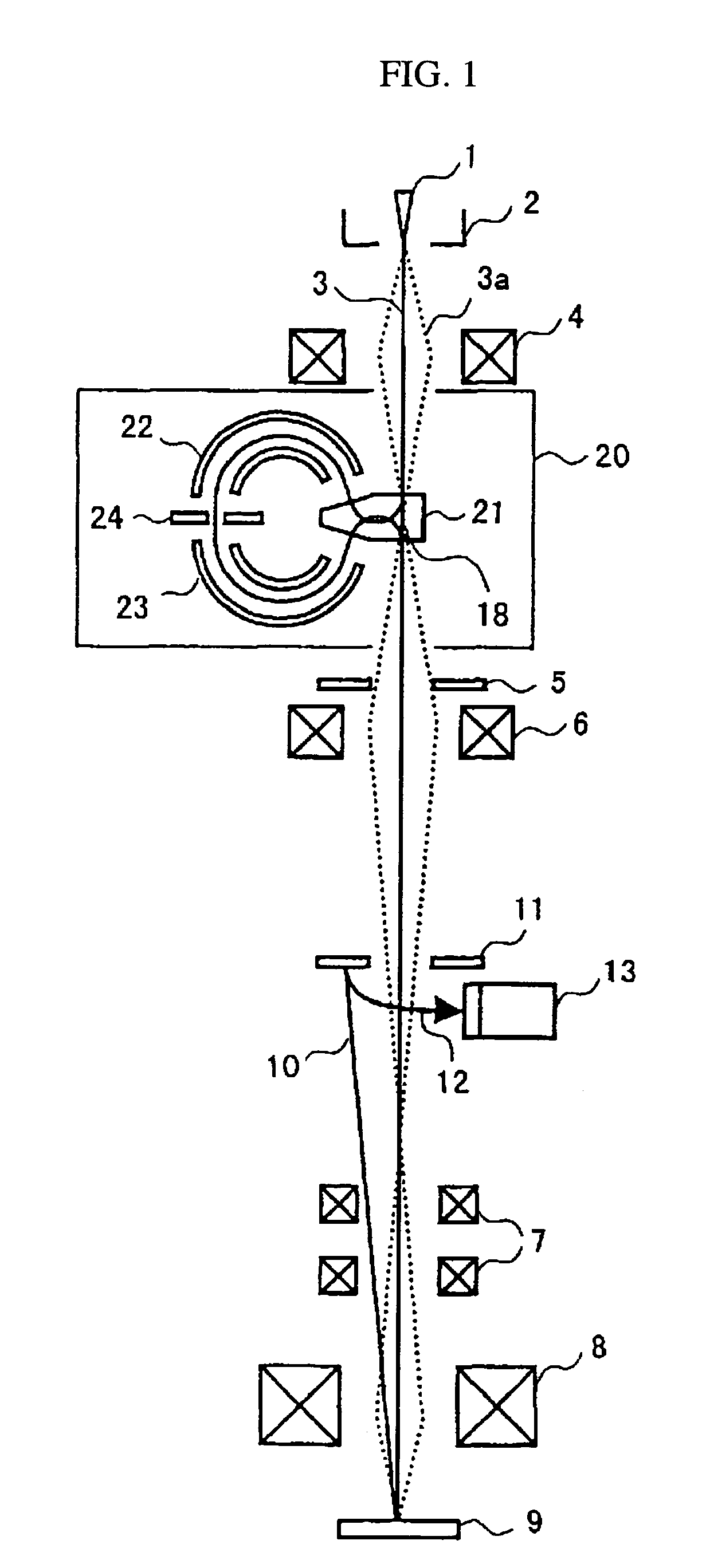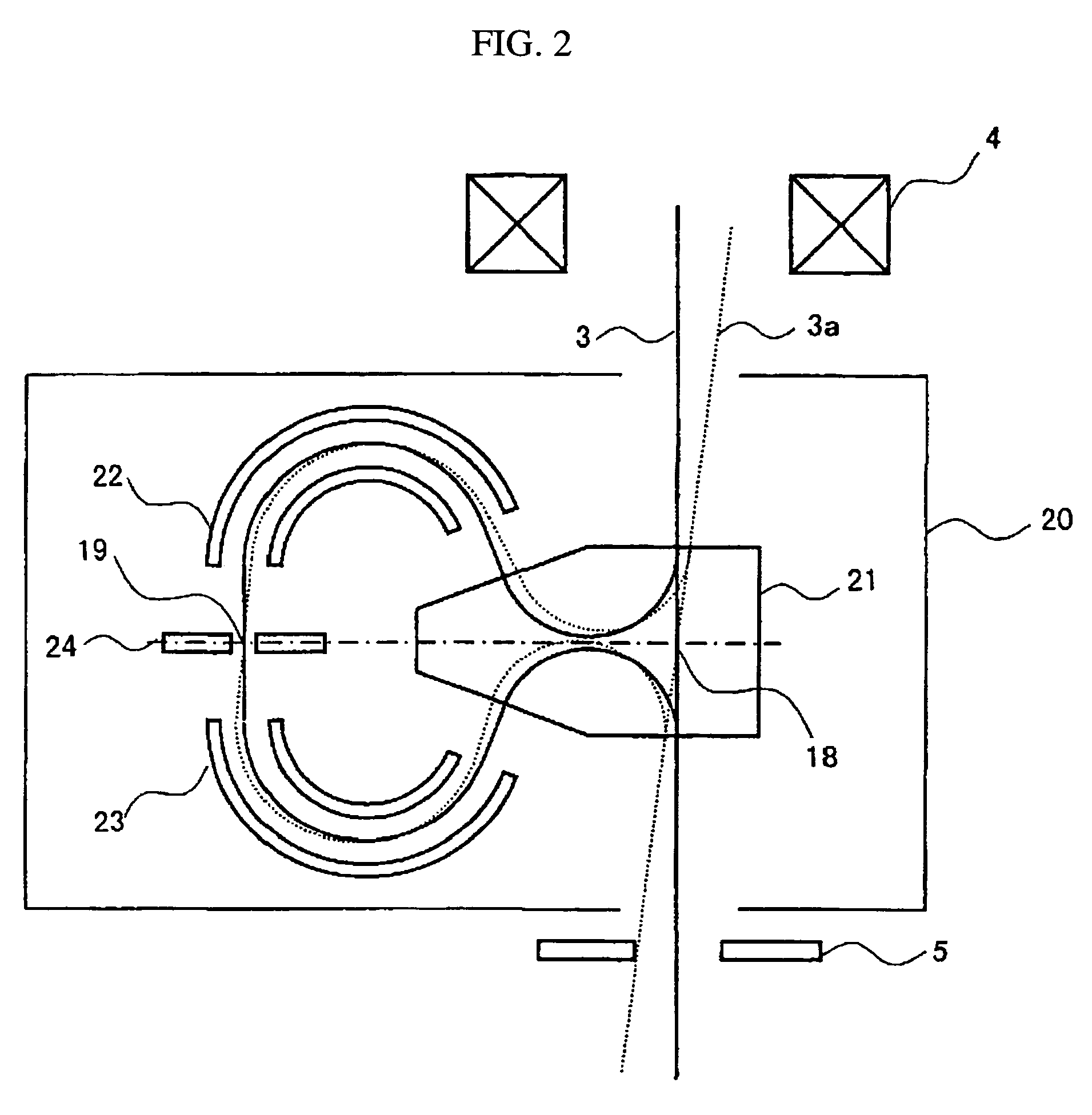Monochromator and scanning electron microscope using the same
- Summary
- Abstract
- Description
- Claims
- Application Information
AI Technical Summary
Benefits of technology
Problems solved by technology
Method used
Image
Examples
first embodiment
[0039]The optical system and optical system operation for the scanning electron microscope containing a monochromator of the first embodiment of the present invention is described next while referring to FIG. 1.
[0040]When a voltage is applied across an electron source 1 and anode electrode 2, an electron beam 3 is emitted from the electron source 1 along the linear optical axis. This electron beam 3 also includes an electron beam 3a widening to several dozen millirads, coupling the actual image of the electron source to an internal section of the monochromator 20 with a first convergence lens 4. The electron beam is then deflected in a range of 140 degrees or more and 170 degrees or less, by a magnetic field generator 21 of the prestage deflector system, and by deflecting to the same angle in the opposite direction by a first electrical field generator 22, the beam is placed in a direction parallel to the original linear optical axis, focused at the slits 24 position in the x direct...
second embodiment
[0076]The second embodiment of the invention is described next. The energy dispersion trajectory 3d is shown in FIG. 11. The energy dispersion trajectory is emitted at the point in time that the first sectorial magnetic field formed by the magnetic field generator 21 is irradiated. This becomes uniform after passing the first sectorial electrical field formed by the first electrical field generator 22 and passes through the beam restrictor 24. After then passing along the mirror-symmetrical trajectory, the energy dispersion diminishes and becomes completely zero at the point of emission from the sectorial magnetic field formed by the magnetic field generator 21. Even after emission, the energy dispersion of the electron beam 3d remains unchanged at zero. Summing the above, since the energy dispersion along the linear optical axis is always zero, the beam is subjected to point convergence and triple convergence from energy non-dispersion regardless of the point convergence position. ...
PUM
 Login to View More
Login to View More Abstract
Description
Claims
Application Information
 Login to View More
Login to View More - R&D
- Intellectual Property
- Life Sciences
- Materials
- Tech Scout
- Unparalleled Data Quality
- Higher Quality Content
- 60% Fewer Hallucinations
Browse by: Latest US Patents, China's latest patents, Technical Efficacy Thesaurus, Application Domain, Technology Topic, Popular Technical Reports.
© 2025 PatSnap. All rights reserved.Legal|Privacy policy|Modern Slavery Act Transparency Statement|Sitemap|About US| Contact US: help@patsnap.com



